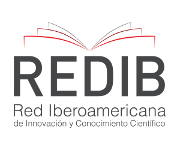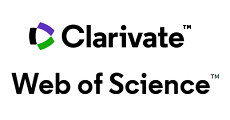Editorial
Editorial
In mid March 2014, Colciencias published the preliminary results of the national competition for the recognition and evaluation of research groups, technological and/or innovative development and for the acknowledgement of member researchers of the Sistema Nacional de Ciencia, Tecnología e Innovación 2013 (National System for Science and Technology 2013). According to the analysis presented by the Universidad Nacional de Colombia’s Office of the Vice Chancellor for Research, the results are promising and it is worthwhile, given the implications presented by these results, to reflect on the work achieved by the researchers. Before considering a few ideas in this regard, I have recapped some of the important statistics that should be taken into consideration1:
The number of A1 classified research groups at the Universidad Nacional de Colombia has increased by 91% between the 2012 and 2014 competition. The rest of the research categories also show an increase in groups, with the exception of classification D, which presented a 74% decrease. The number of research groups that participated in the competition reduced from 487 in 2012 to 433 in 2014.
The research groups at the University that participated in the competition constitute 12% of the total participants. The University´s research groups make up 29% and 24% of the groups classified in the A1 and A category, respectively. Only 17% of all the groups that participated belong to these two categories, while 62% were classified under the C and D categories.
For the first time, not only were research groups classified, but also the researchers themselves. Out of 8,690 researchers, 7.7% belong to a senior category; of this percentage, 24% are researchers of the Universidad Nacional de Colombia. 11.6% of the researchers that participated in the competition are researchers of the Universidad Nacional de Colombia.
Yet, we must go beyond the statistics. These types of classifications and their repercussions on research and teaching and therefore, the duties of University professors, are less and less brought into question. There is no doubt that research is invaluable for the betterment of teaching, but this can interfere with professorial activities, mainly at the undergraduate level, leaving them as lesser priorities and by consequence, negatively affecting the quality of education.
On the other hand, journal rankings, particularly national journals rankings, have an influence on the classification of the research groups and the researchers. Many of the national journals, including Ingeniería e Investigación, have adapted to the classification standards, leaving behind other forms of research and research diffusion that are not globally accepted. An example if this is the use of the English language for the articles in search of a higher number of citations, even though the native language is Spanish. There is a focus on a non-local readership, which can result in the lack of publication of issuesthat, if directed for the benefit of a local readership, do not fit within general research trends. I do not intend to provide answers, nor place judgment on this or other classifications or ranking systems, but rather to call attention to some of the implications of the aforementioned, given that they are not apparent.
This issue, the first of volume 34, includes fifteen articles from the different areas that fulfill the objectives of the journal. On this occasion, the subjects are much more diverse than those presented in previous issues and include results from research conducted on medical devices for the reduction of the risks associated with the inadequate supply of oxygen, tools for automatic planning, recommendation methods based on collaborative techniques inspired by ant colonies, computational fluid mechanics for the optimization of biomimetic based propulsors, the assessment of construction materials and stages of chemical processes such as solubilization hydrolysis of solid waste and cassava starch particle sedimentation.
I hope that the articles in this issue will be of interest to all of our readers as well as the paragraphs in which I present some points of view about the effect of research on education and journal´s editorial policies.
1Values calculated based on the data reported by http://www.investigacion.unal.edu.co/index.php/boletininvestigaun/nota/2001-20140320-colciencias640, consulted March 25, 2014.
Eng. Paulo César Narváez Rincón
Associate Professor – Chemical and Environmental Department
- Engineering Faculty
Director – Ingeniería e Investigación Journal
Universidad Nacional de Colombia, Bogotá
How to Cite
APA
ACM
ACS
ABNT
Chicago
Harvard
IEEE
MLA
Turabian
Vancouver
Download Citation
Article abstract page views
Downloads
License
Copyright (c) 2014 Paulo César Narváez Rincón

This work is licensed under a Creative Commons Attribution 4.0 International License.
The authors or holders of the copyright for each article hereby confer exclusive, limited and free authorization on the Universidad Nacional de Colombia's journal Ingeniería e Investigación concerning the aforementioned article which, once it has been evaluated and approved, will be submitted for publication, in line with the following items:
1. The version which has been corrected according to the evaluators' suggestions will be remitted and it will be made clear whether the aforementioned article is an unedited document regarding which the rights to be authorized are held and total responsibility will be assumed by the authors for the content of the work being submitted to Ingeniería e Investigación, the Universidad Nacional de Colombia and third-parties;
2. The authorization conferred on the journal will come into force from the date on which it is included in the respective volume and issue of Ingeniería e Investigación in the Open Journal Systems and on the journal's main page (https://revistas.unal.edu.co/index.php/ingeinv), as well as in different databases and indices in which the publication is indexed;
3. The authors authorize the Universidad Nacional de Colombia's journal Ingeniería e Investigación to publish the document in whatever required format (printed, digital, electronic or whatsoever known or yet to be discovered form) and authorize Ingeniería e Investigación to include the work in any indices and/or search engines deemed necessary for promoting its diffusion;
4. The authors accept that such authorization is given free of charge and they, therefore, waive any right to receive remuneration from the publication, distribution, public communication and any use whatsoever referred to in the terms of this authorization.























